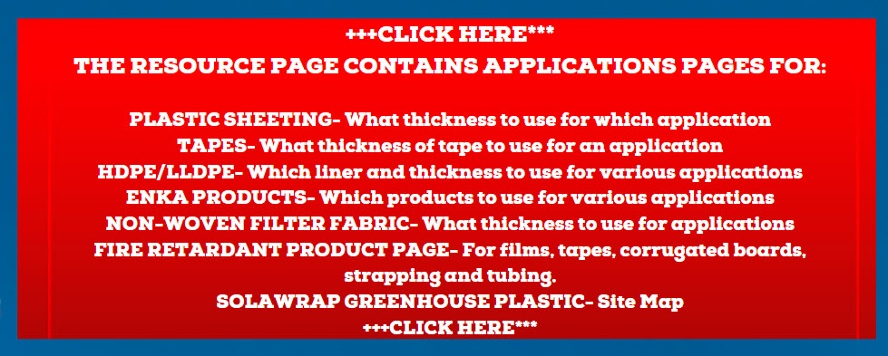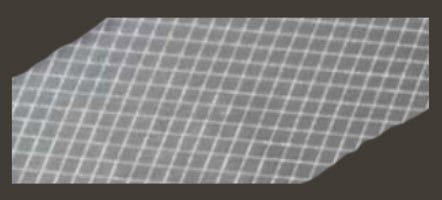HDPE is a very impressive polyethylene film. The following can be seen as the advantages or disadvantages. Here is the "con" perspective:
The Cons of Utilizing HDPE:
It is high flammability, sensitivity to stress cracking, inability to be biodegradable, inability to be composted, lack of resistance to oxidizing acids, lack of resistance to chlorinated hydrocarbons, and its high thermal expansion.
The advantages of using HDPE are as follows:
HDPE has many advantages, such as being cost-effective, able to withstand temperatures ranging from -148 to 176 degrees Fahrenheit, non-leaching, UV-resistant, dishwasher safe, resistant to most chemical solvents, and a stiff material.
Common Uses of High Density Polyethylene of HDPE
High-density polyethylene or HDPE is a commonly used petroleum thermoplastic and the most used of the three polyethylenes for a wide range of applications. If you look at this plastic under a microscope, you would see that it has a linear structure with few branches lending to its optimal strength/density ratio. As a result of its molecular makeup, this polymer shines brightest in applications where moisture resistance and cost-effectiveness are needed.
HDPE was created in the 1930s. It was introduced to the market commercially soon after. While its higher density versions yield a more rigid result, HDPE can vary in flexibility. Low-density grades of the thermoplastic are less stiff and the high-density grades have equally high crystallinity. HDPE is a versatile thermoplastic that is widely used in a variety of applications. It is known for its durability, cost-effectiveness, and moisture resistance due to its linear structure with few branches. It was first introduced commercially in the 1930s, following its use in high-frequency radar cables during World War II. HDPE can vary in flexibility, with low-density grades being less stiff and high-density grades exhibiting high crystallinity.

Uses for HDPE:
HDPE (High Density Polyethylene) has a variety of common uses. Water bottles are a common introduction to the durable plastic, as its blow-molding properties make it perfect for food and beverage containers. Not only is it recyclable, but it is also UV-resistant, making it ideal for toys. HDPE is also great for chemical containers, such as laundry, shampoo, conditioner, motor oil, antifreeze, and recycling bins. For piping and outdoor applications, HDPE pipe grade sheet is used due to its increased molecular weight and UV-resistance, as well as its ability to withstand temperatures from -220 to 180 degrees Fahrenheit. This makes it ideal for many industrial applications.
Is HDPE a Good Plastic?
HDPE plastic is considered to be one of the most environmentally sound plastics available. It doesn't release any harmful fumes into the environment, and requires much less energy to produce than other materials such as steel from iron ore. Therefore, it is considered an Eco-friendly choice for many applications.
Is HDPE the Same as Plastic?
HDPE is a durable and strong plastic material, often utilized to create containers such as milk and water jugs. Its strength is such that a 60g jug can hold a full gallon of liquid without becoming distorted in shape. HDPE is distinct from other plastics and has many unique benefits.
What material is HDPE?
HDPE stands for High Density Polyethylene, which is a type of thermoplastic made from a string of ethylene molecules. It is known for its light weight and strength, and is commonly referred to as HDPE sheet plastic.
Is HDPE as strong as steel?
One may ask if HDPE is as strong as steel, to which the answer is no. While HDPE has an impressive ultimate tensile strength of 4,600 psi, Grade 304 stainless steel has an ultimate tensile strength of 73,200 psi. As such, steel is significantly stronger than HDPE when it comes to resistance to impacts and heavy loads.
How long will HDPE last?
The typical benchmark for HDPE life expectancy is 50 years; however, per the Plastics Pipe Institute, HDPE pipe used in municipal potable water systems can have a lifespan of over 100 years.
Addressing Common Concerns About HDPE
While High-Density Polyethylene (HDPE) is a widely used and versatile material, there are a few concerns that are commonly raised about its use. It’s important to understand these issues and how they can impact your specific application. Below, we’ll explore some of the most frequently mentioned concerns and how to address them.
1. Flammability
One major concern is the flammability of HDPE. Like most plastics, HDPE can catch fire under certain conditions. Although it has a relatively high ignition temperature (around 662°F or 350°C), once ignited, it can burn. This makes HDPE unsuitable for applications in environments where it may be exposed to extreme heat or open flames.
Solution: For projects where fire resistance is crucial, it’s recommended to consider fire-retardant materials or consult an expert about using protective coatings. Call us to discuss alternatives that can better withstand high-temperature conditions.
2. Environmental Impact
Another frequent concern is HDPE's environmental impact. HDPE is non-biodegradable, which means that, like many other plastics, it can persist in the environment for hundreds of years. However, it is fully recyclable, making it an eco-friendly option when used responsibly. Additionally, HDPE does not leach harmful chemicals, making it safer for the environment compared to other plastics.
Solution: If environmental impact is a major factor in your project, contact us to discuss recycling options or alternative materials that may better align with your sustainability goals.
3. Sensitivity to Stress Cracking
HDPE is susceptible to stress cracking, especially when exposed to certain chemicals over extended periods. This can compromise its structural integrity in specific applications, especially those involving harsh chemicals or prolonged exposure to stressors.
Solution: If stress cracking is a concern in your industry or project, call us to explore chemical-resistant grades of HDPE or other more suitable materials.
4. Resistance to Chemicals and UV Exposure
While HDPE is resistant to most chemicals, it does have limitations when exposed to strong oxidizing acids and some chlorinated hydrocarbons. Additionally, HDPE's exposure to UV light over time can cause it to become brittle and degrade, making it unsuitable for outdoor applications unless UV stabilizers are added.
Solution: For applications involving chemical exposure or outdoor use, contact us to explore specialized HDPE products with added UV resistance or chemical protection.
Industry-Specific Solutions: Tailored HDPE Applications
HDPE’s versatility makes it suitable for a wide variety of industries, including construction, packaging, and agriculture. However, the specific requirements of each industry may require different HDPE formulations or alternative materials. Here’s how HDPE can be tailored to specific industries:
Construction
In construction, HDPE is often used for pipes, geosynthetics, and waterproofing membranes. Its resistance to moisture and many chemicals makes it ideal for underground piping systems, and its flexibility allows it to withstand ground movements.
However, concerns such as flammability and thermal expansion in high-temperature environments must be considered.
Call us to discuss how HDPE can be customized for your construction project, and what solutions can be applied to manage flammability risks.
Environmental Protection
HDPE is a common material for landfill liners, water barriers, and geomembranes used in environmental containment systems. Its resistance to most chemicals makes it ideal for these applications, but if longevity or biodegradability are concerns, there may be other materials worth considering.
How to Get More Information
At the end of the day, every project has its own unique requirements, and choosing the right material can make a big difference in performance, cost, and safety. While HDPE offers many benefits, some applications may require specific adaptations or alternative materials.
If you’re uncertain about which material is best for your project, call us today to discuss your needs and get personalized advice on material selection.
By addressing common concerns and providing industry-specific guidance, we can help you ensure that your project is both successful and safe.















